Full text
PDF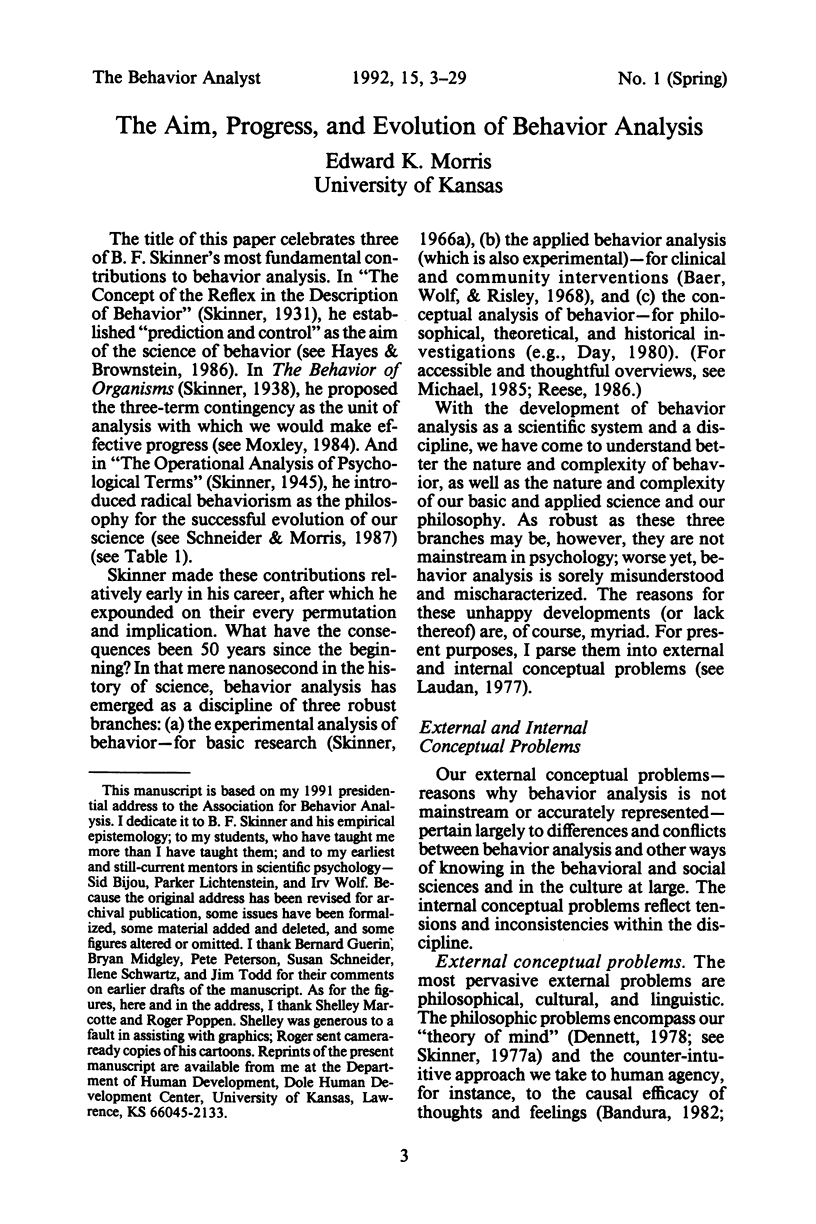
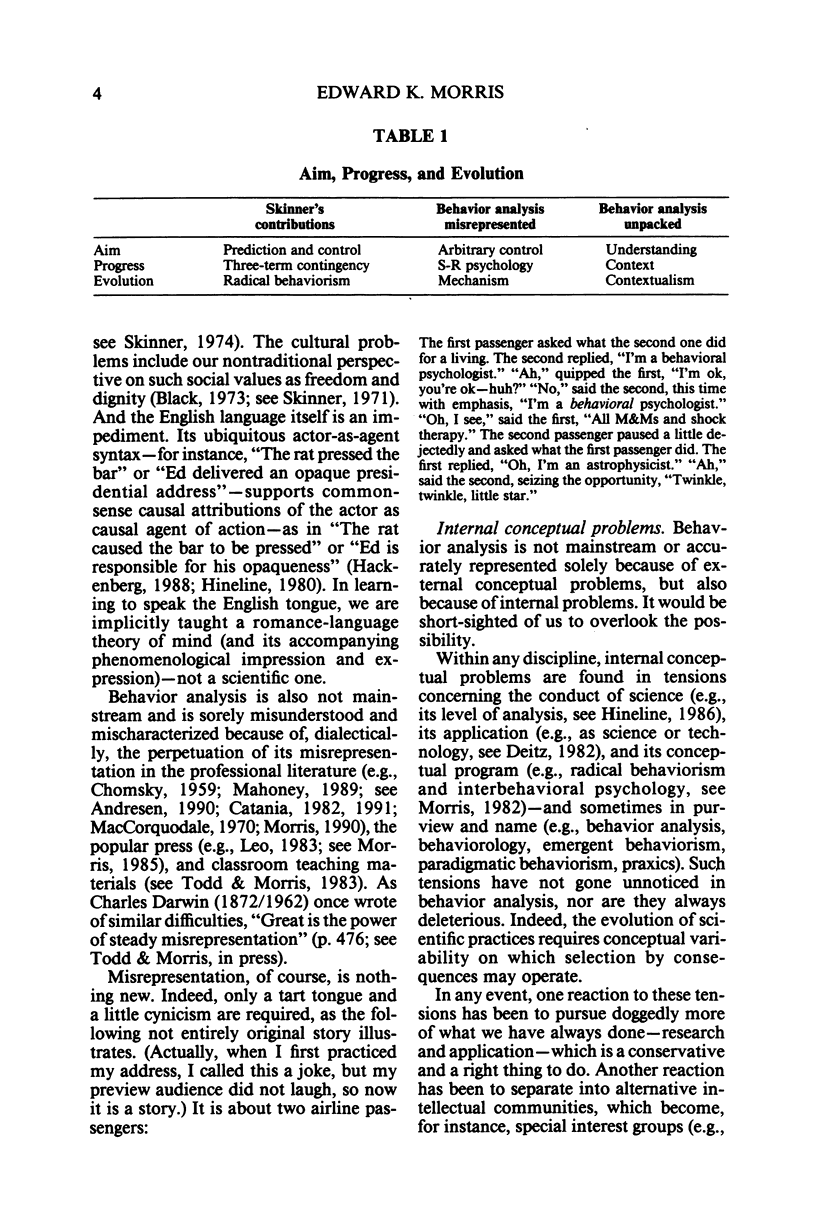
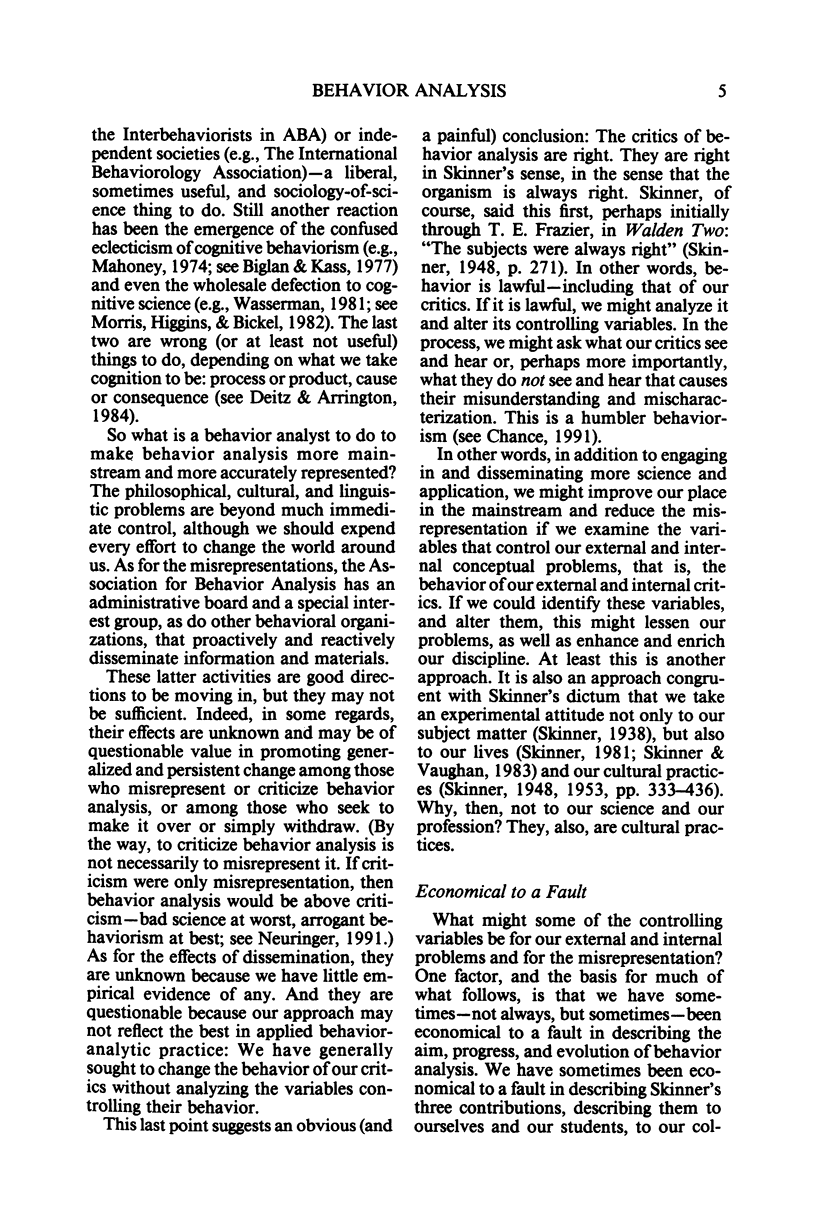
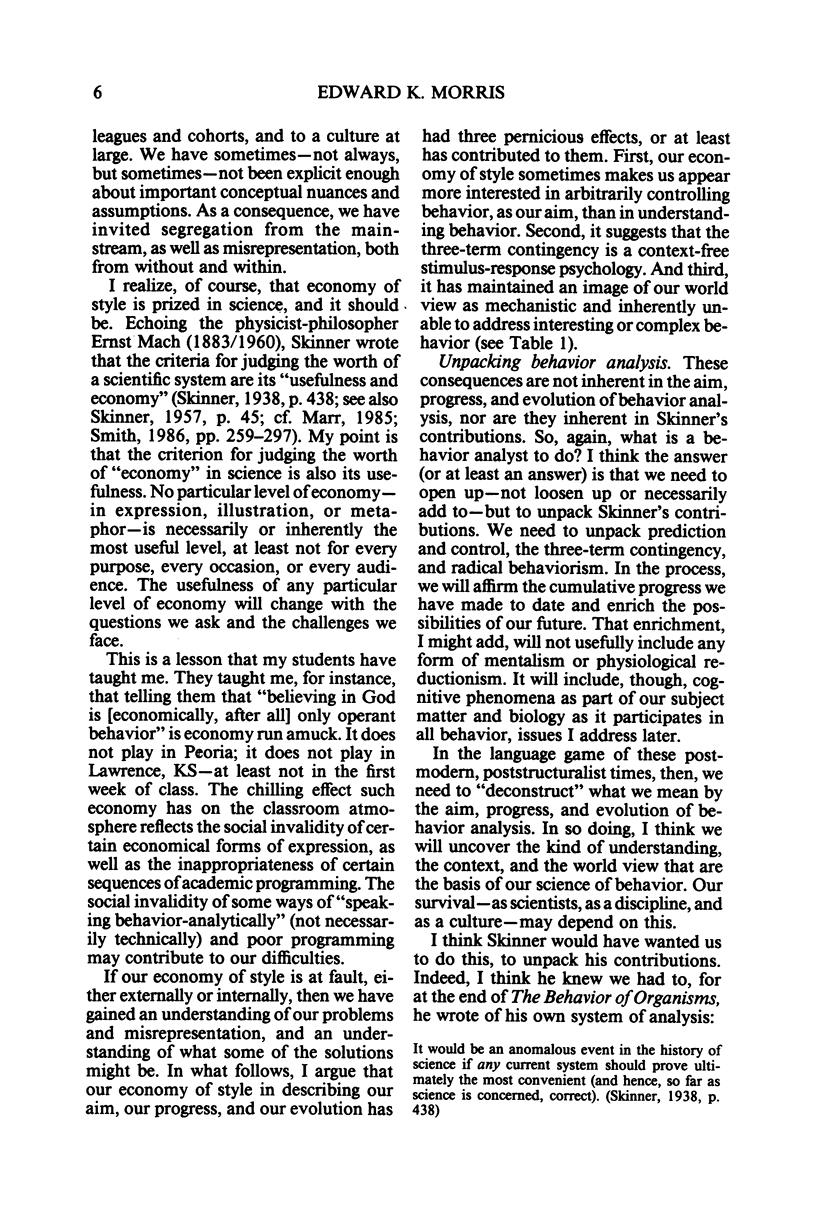
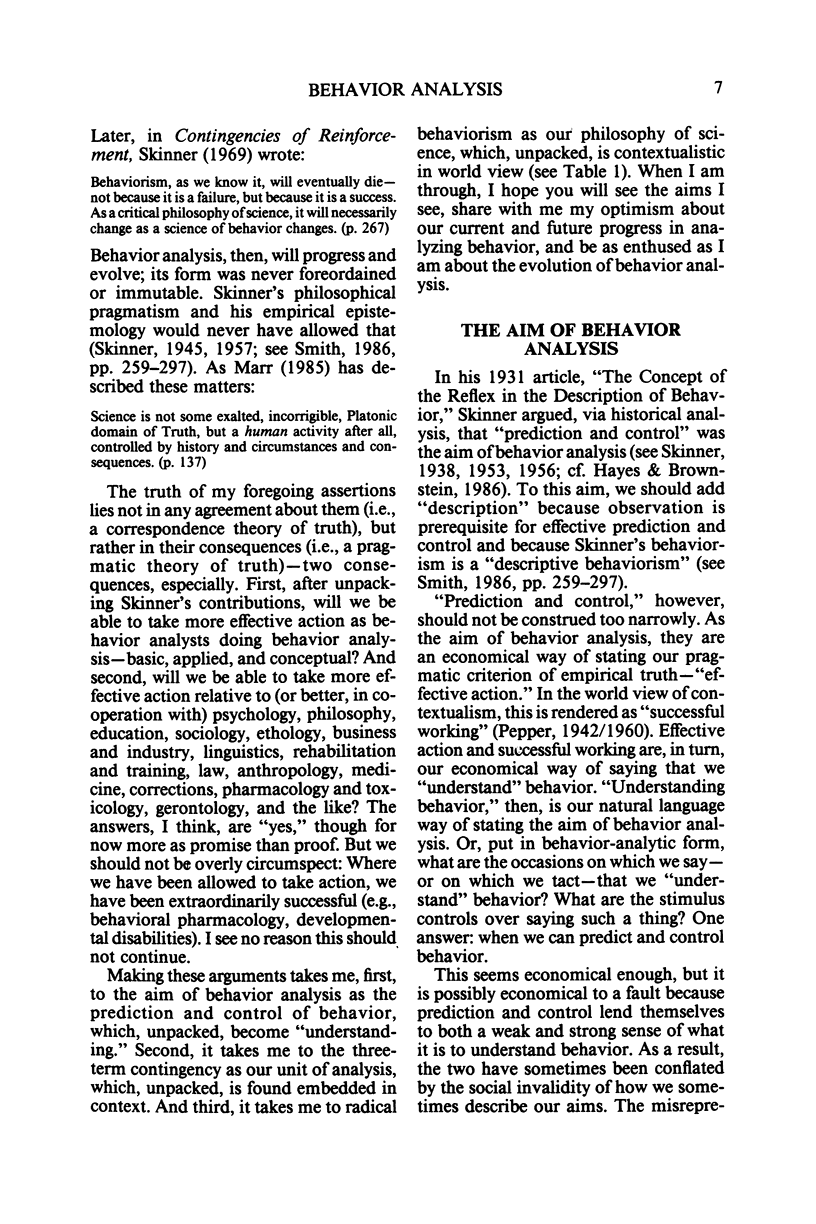
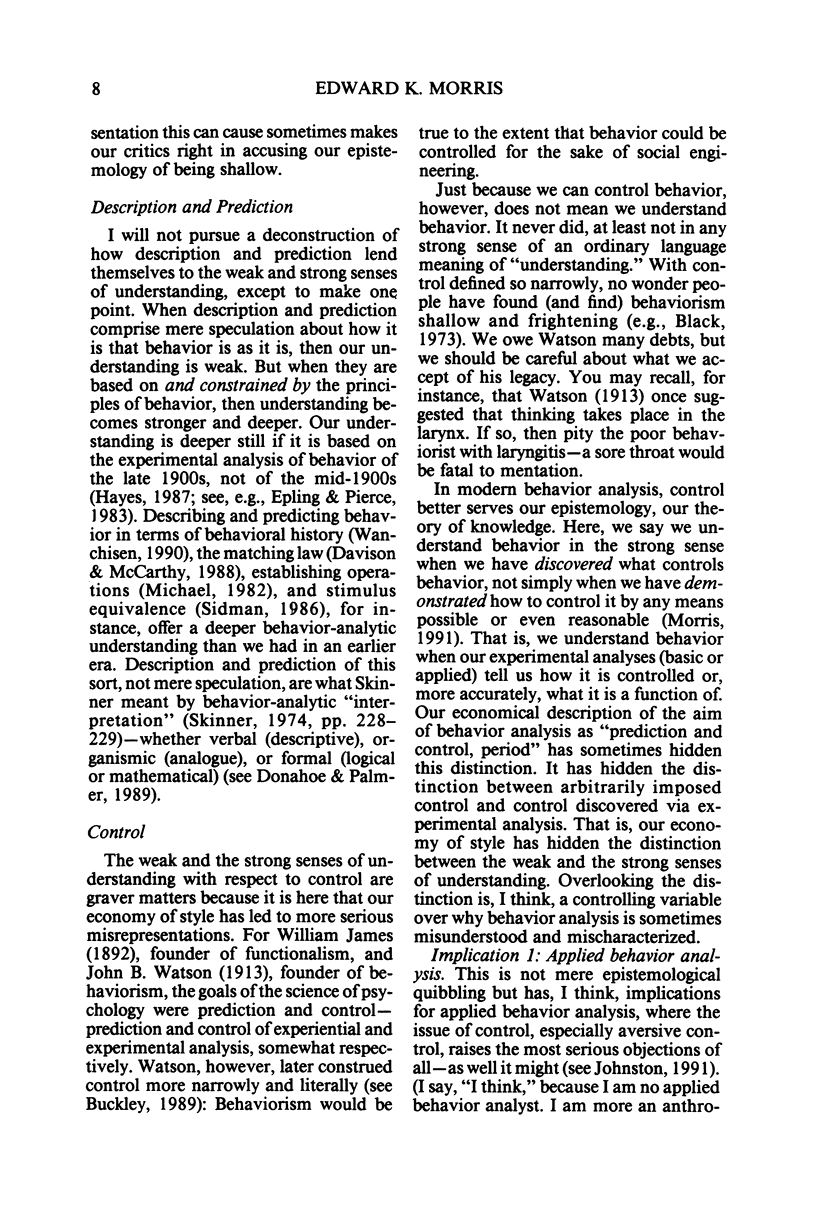
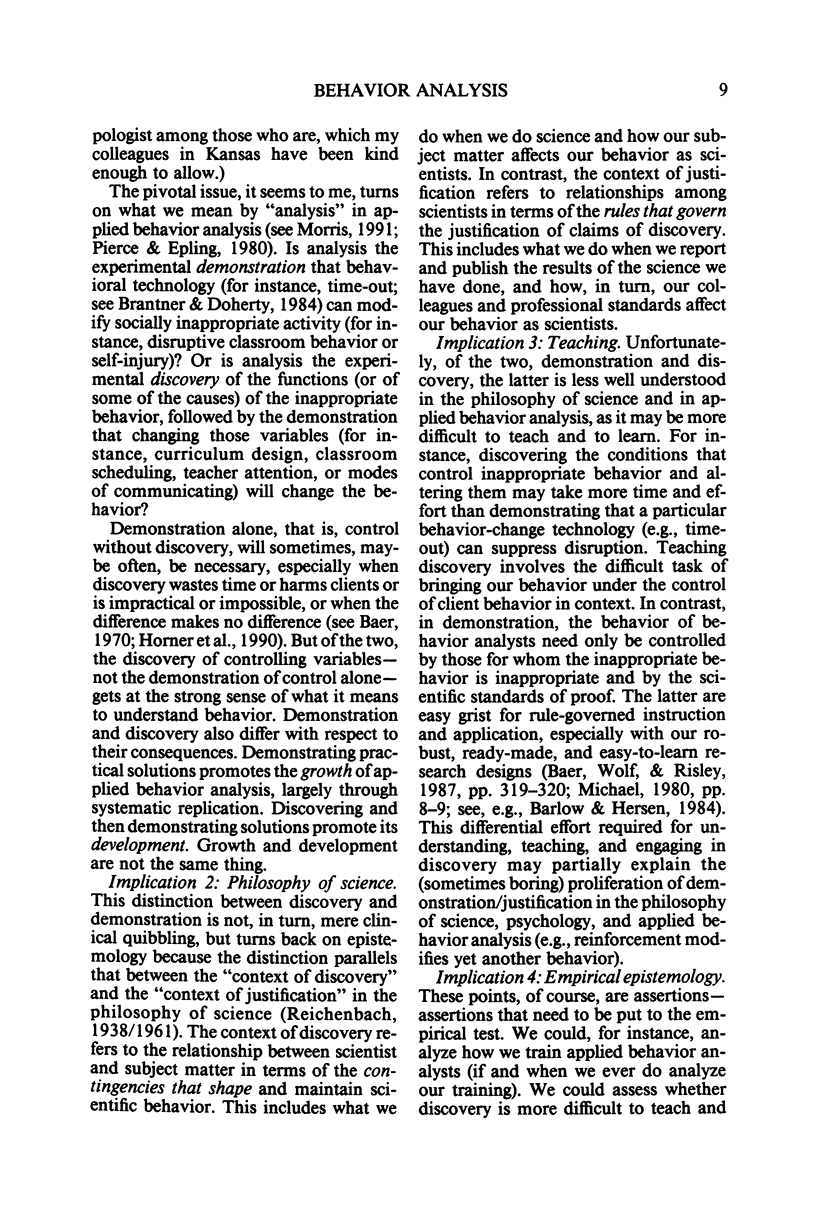
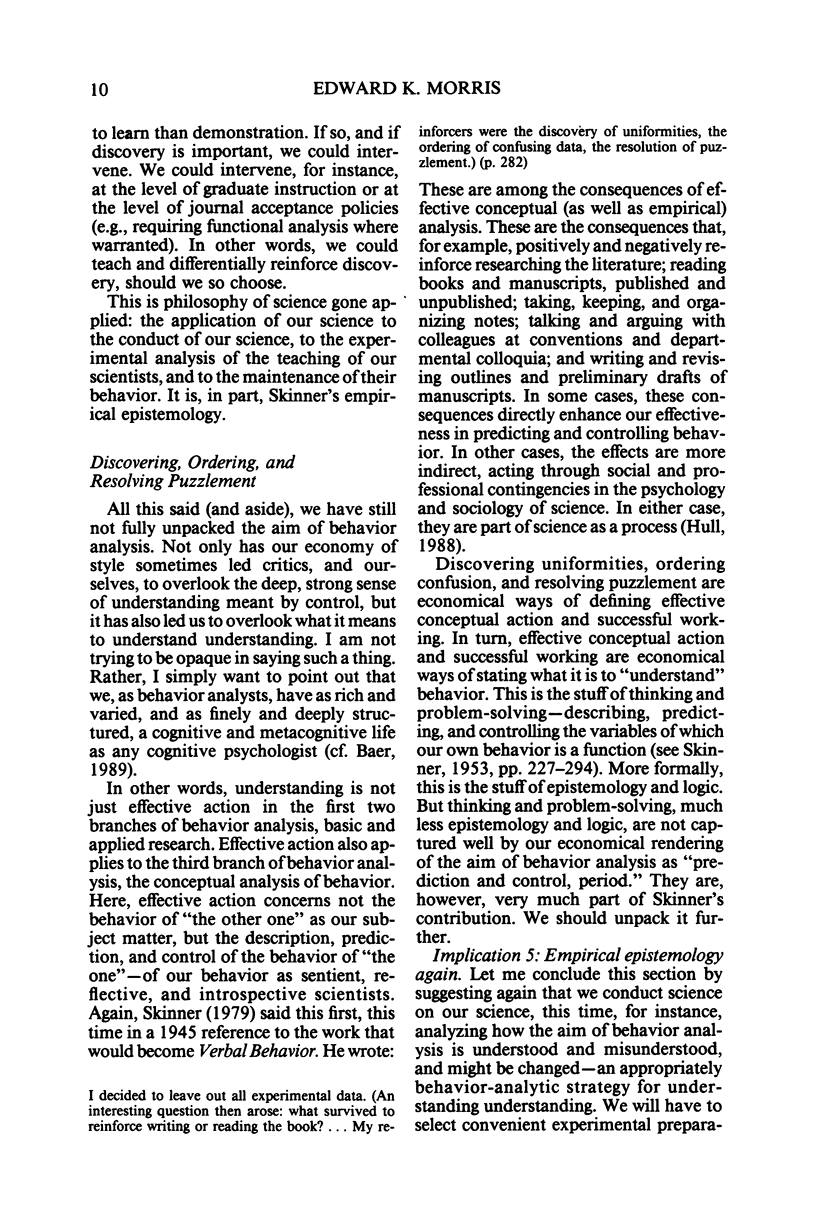
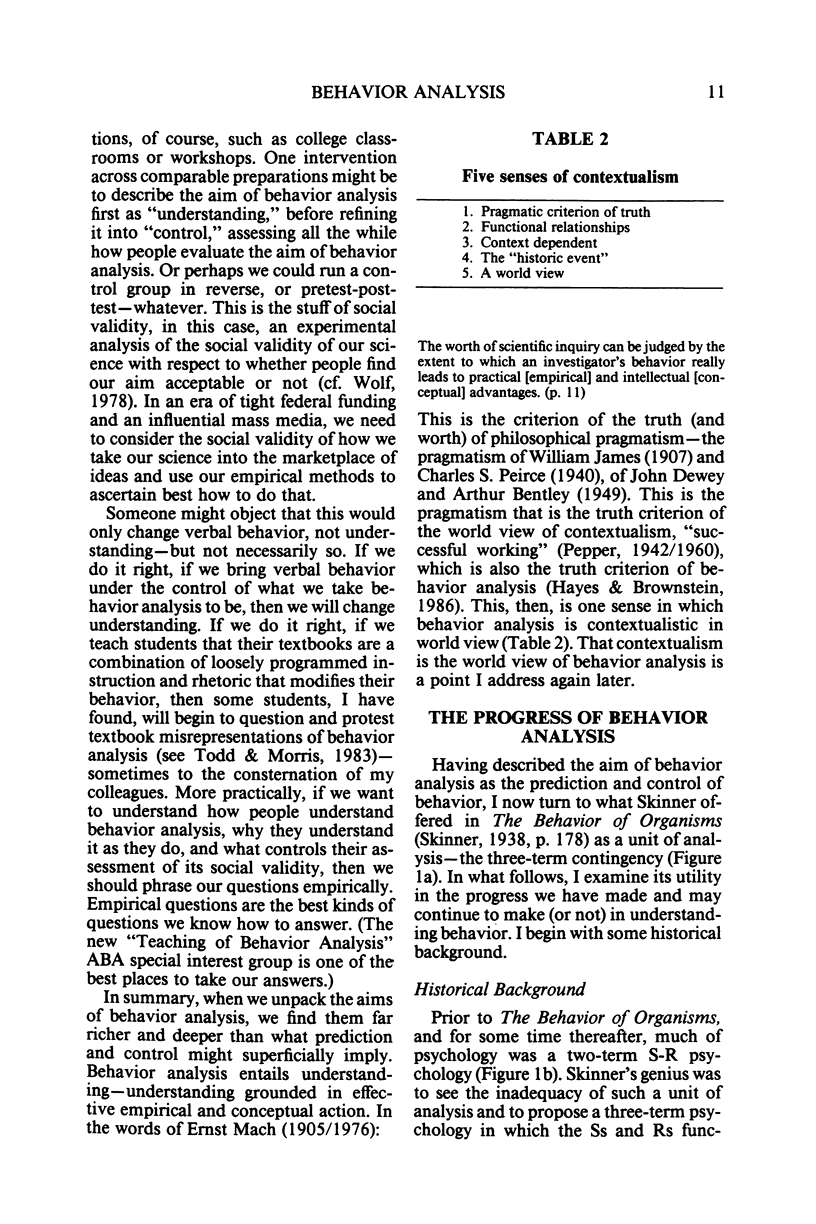
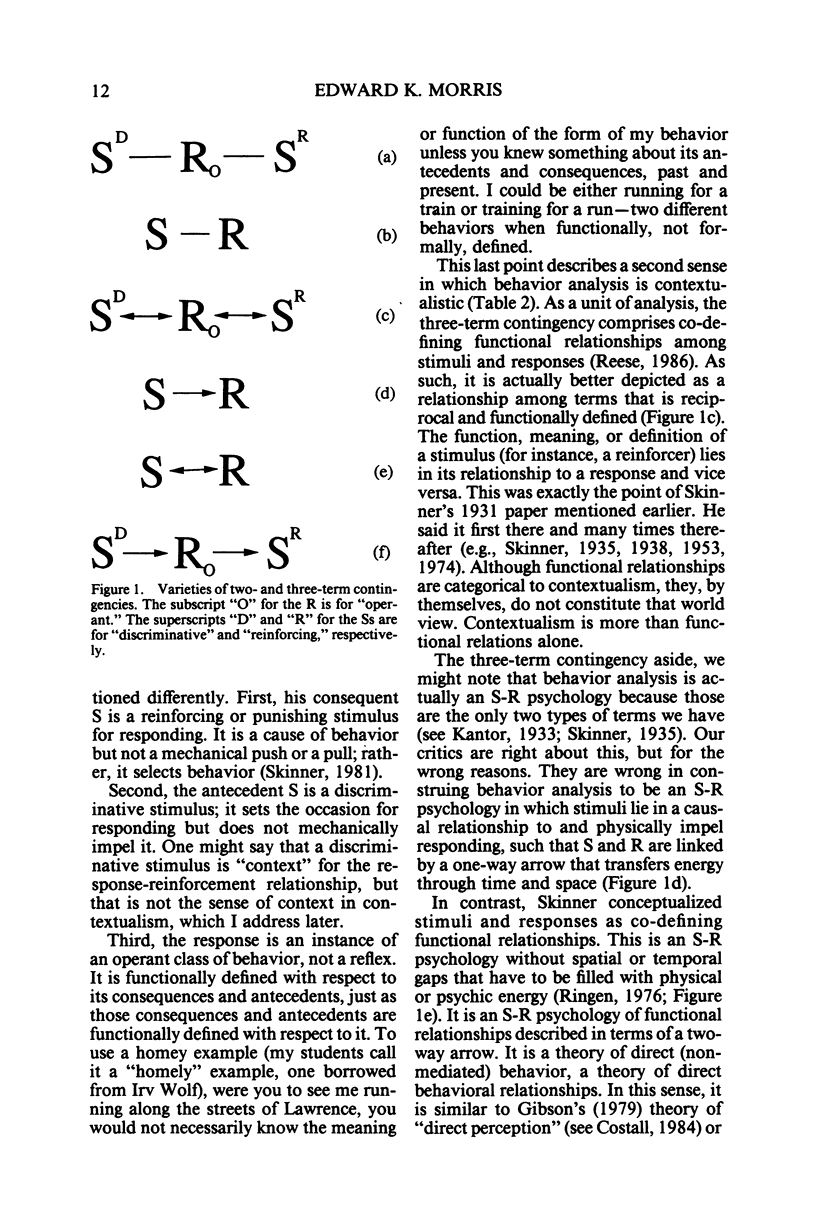
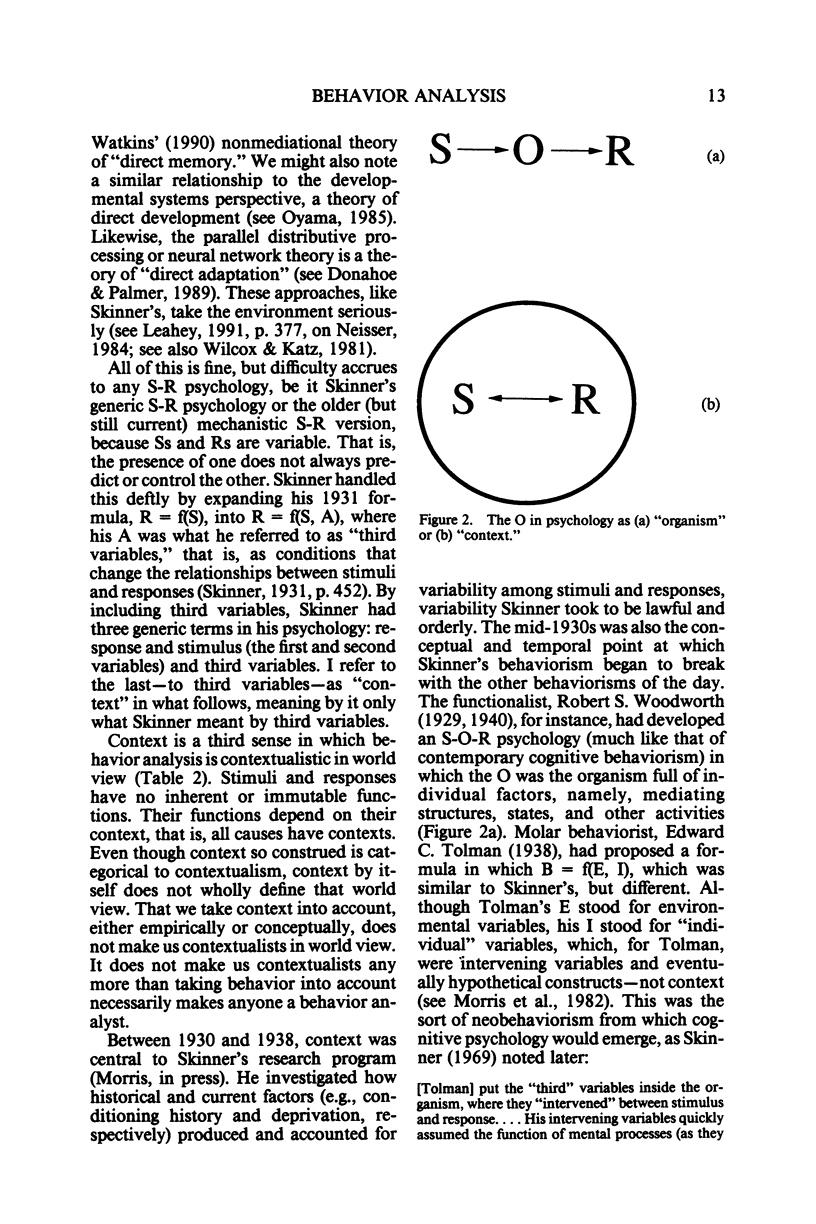
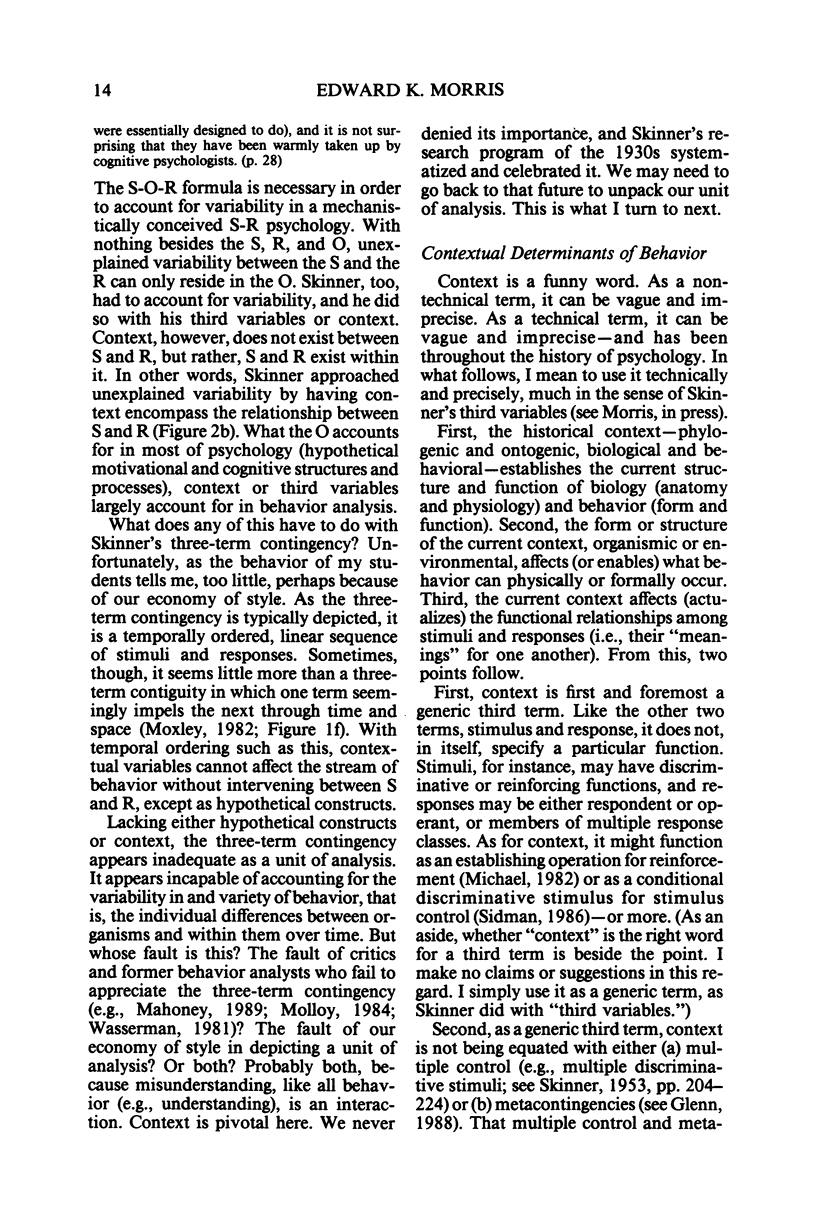
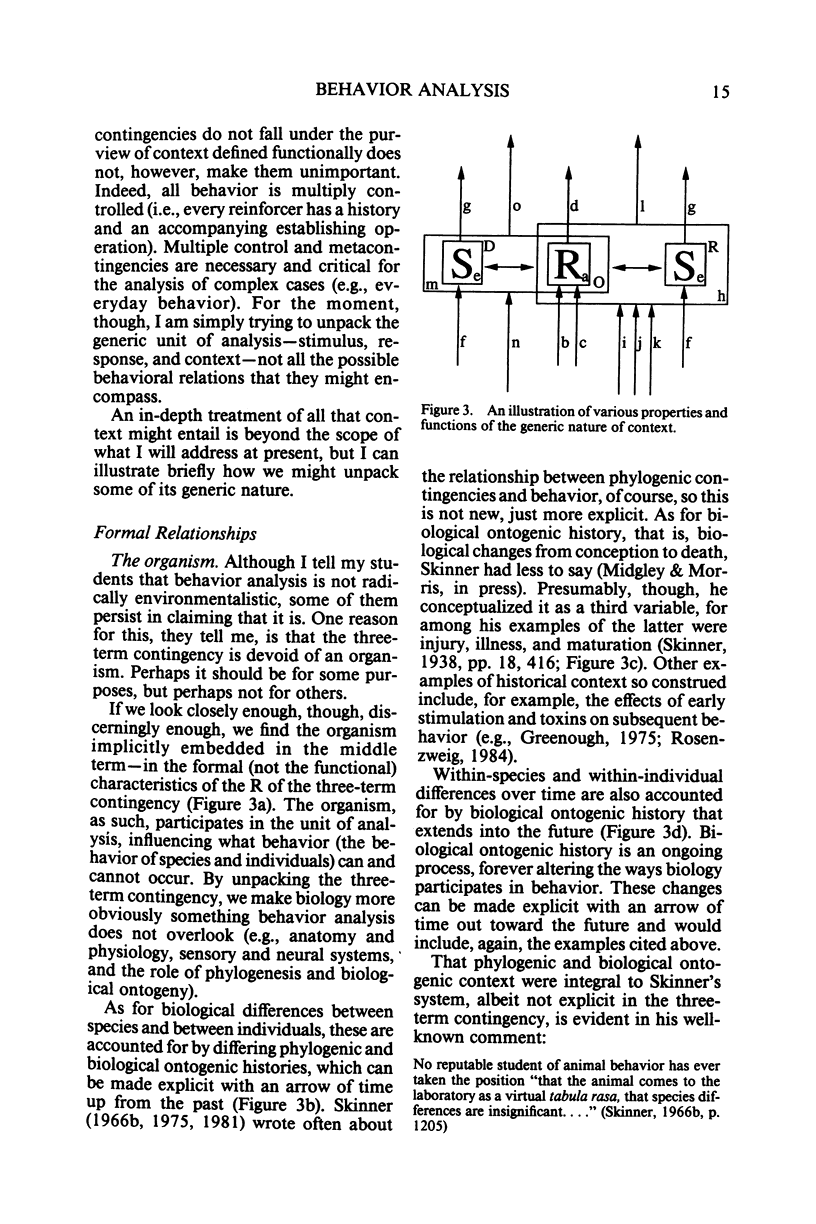
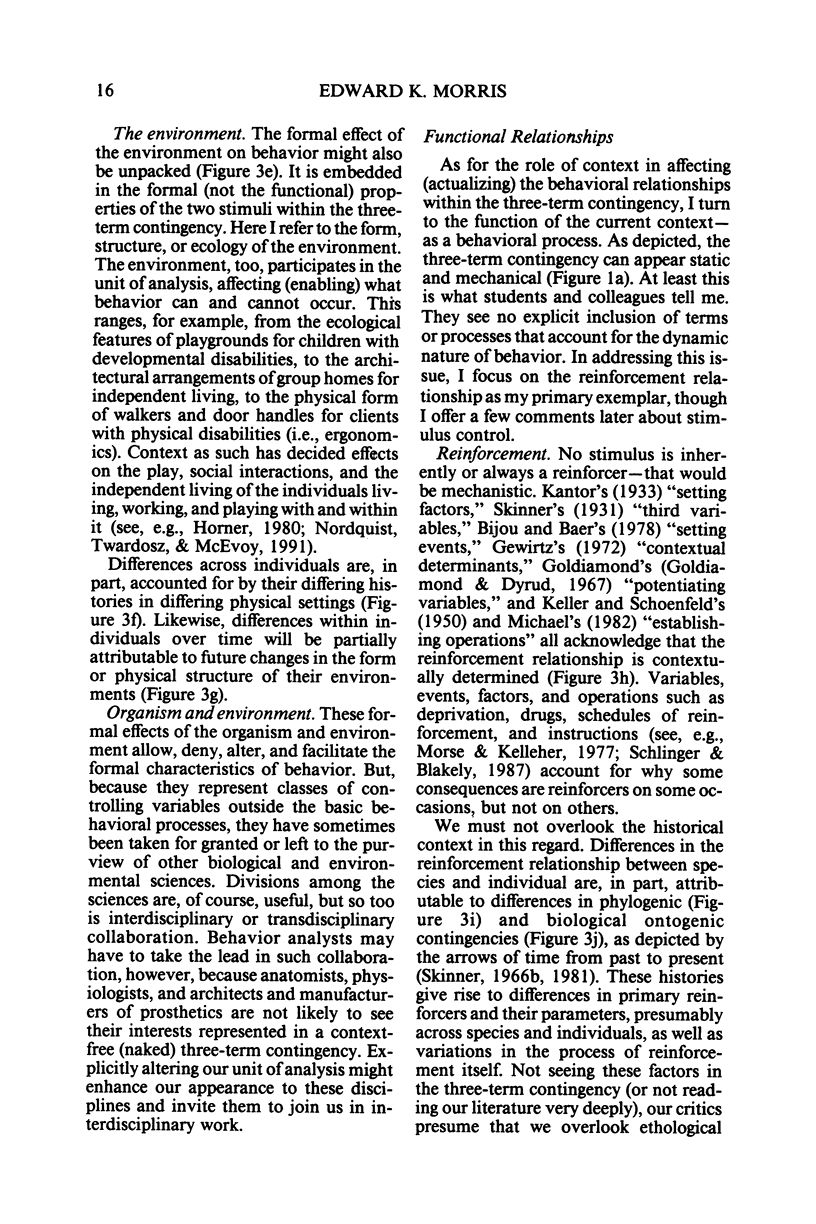

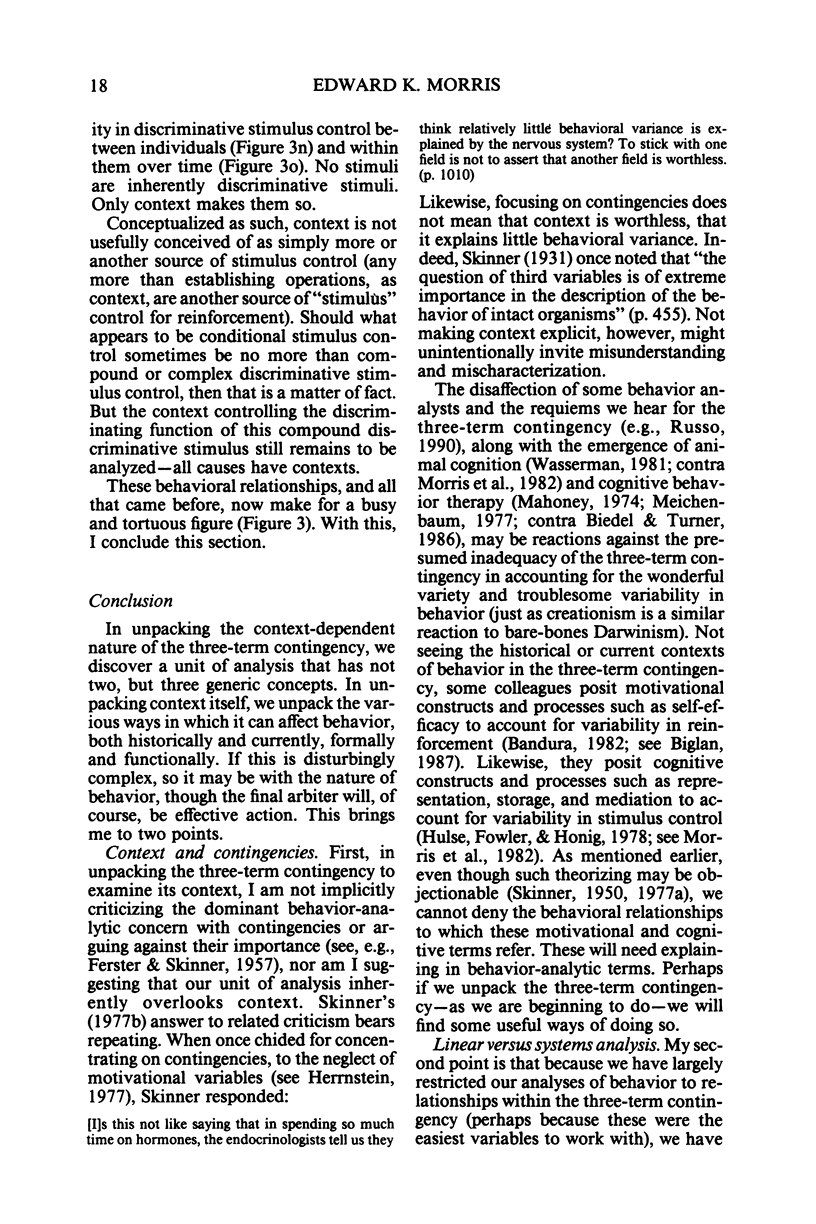
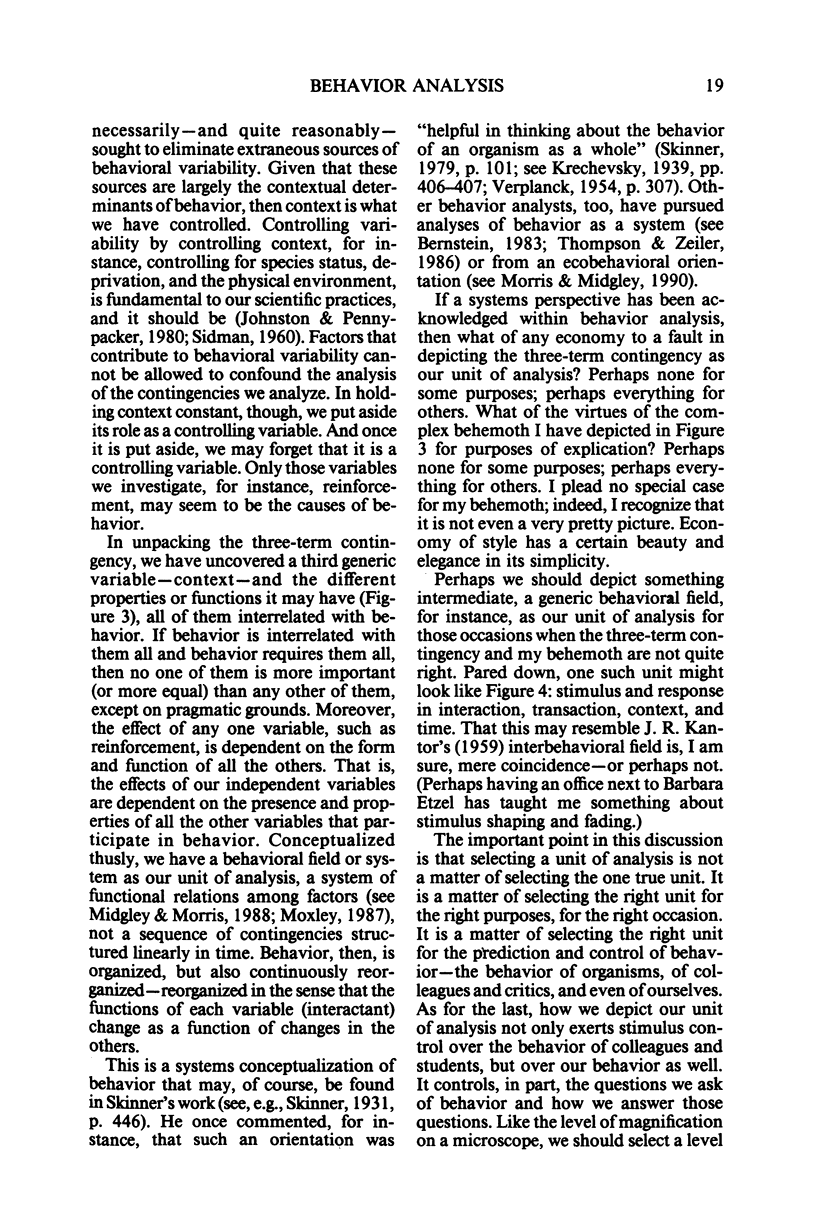
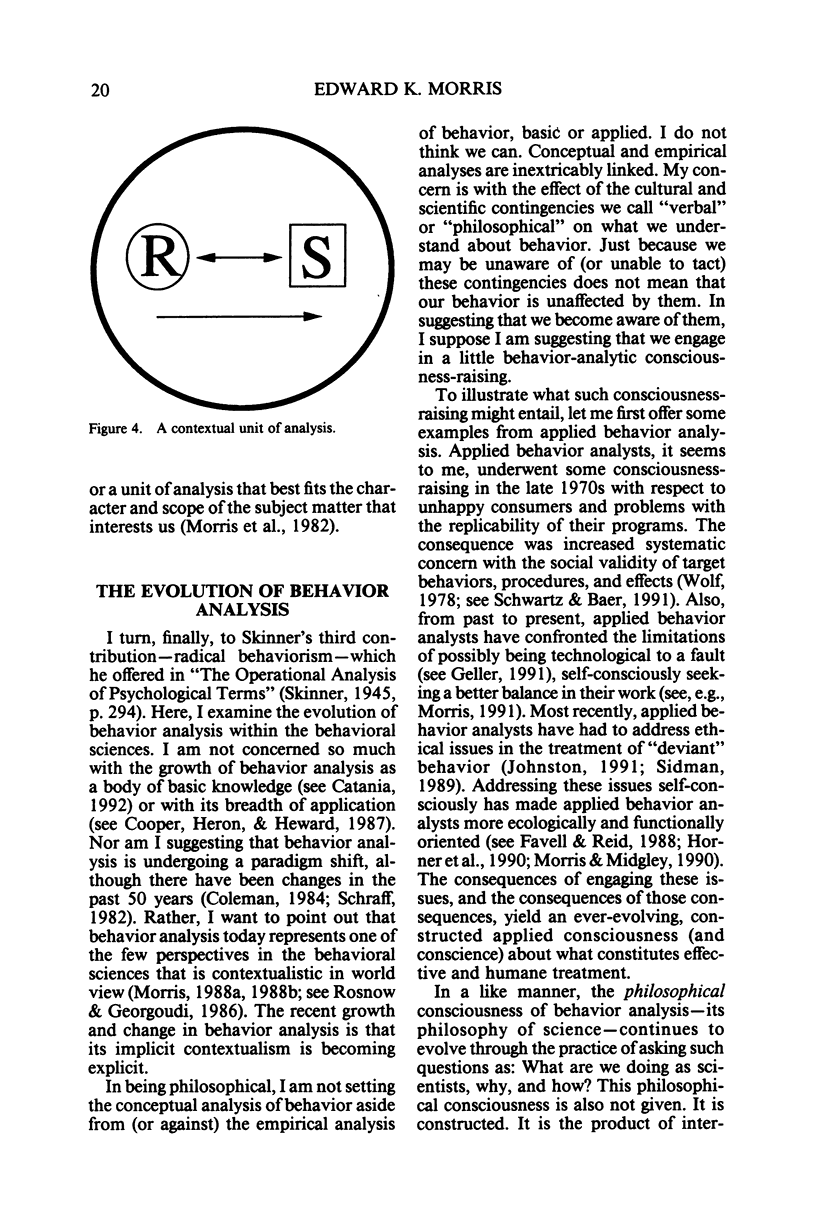
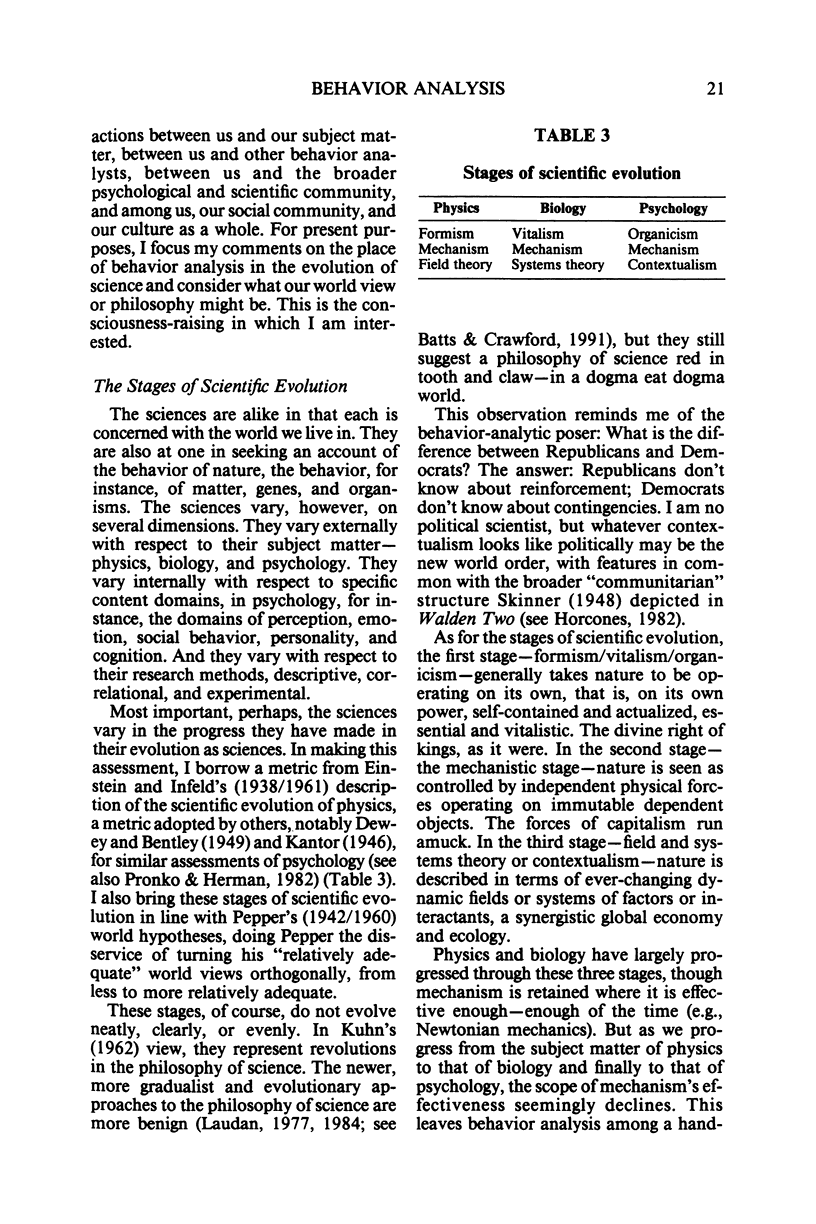
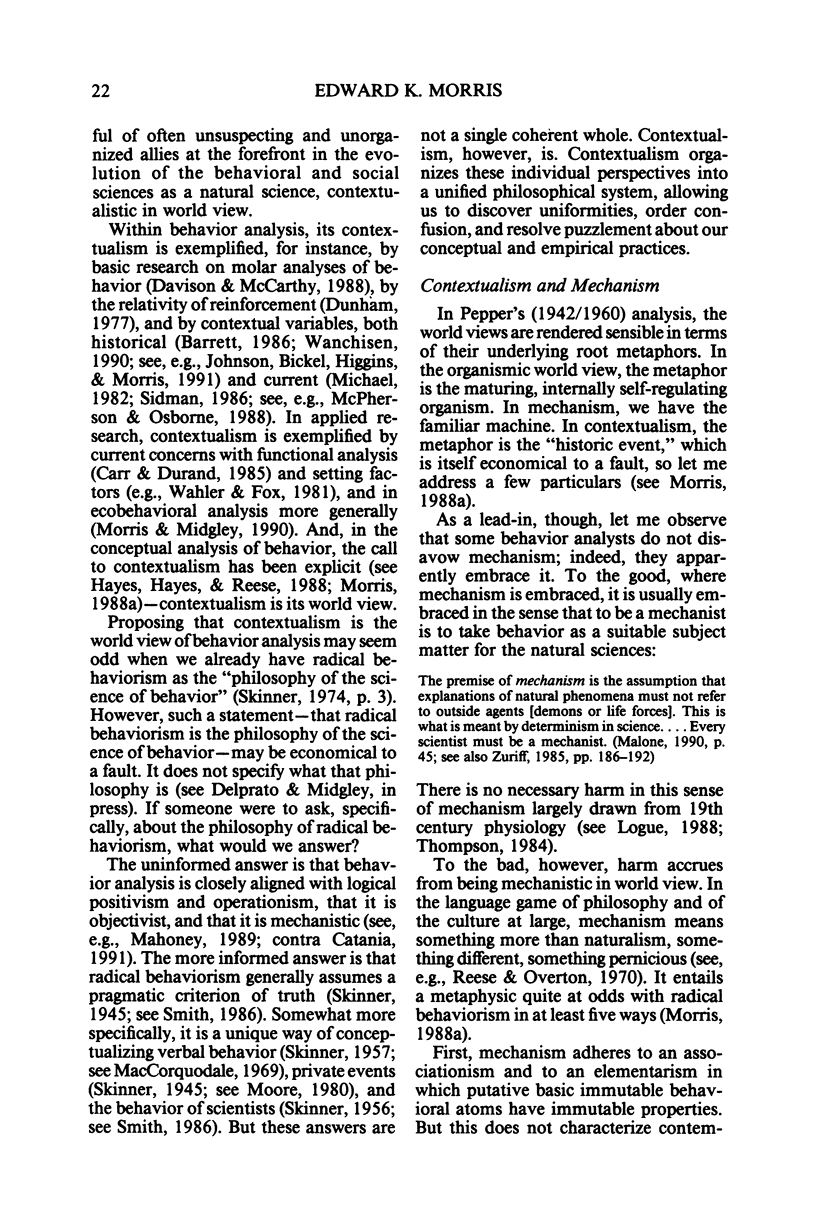
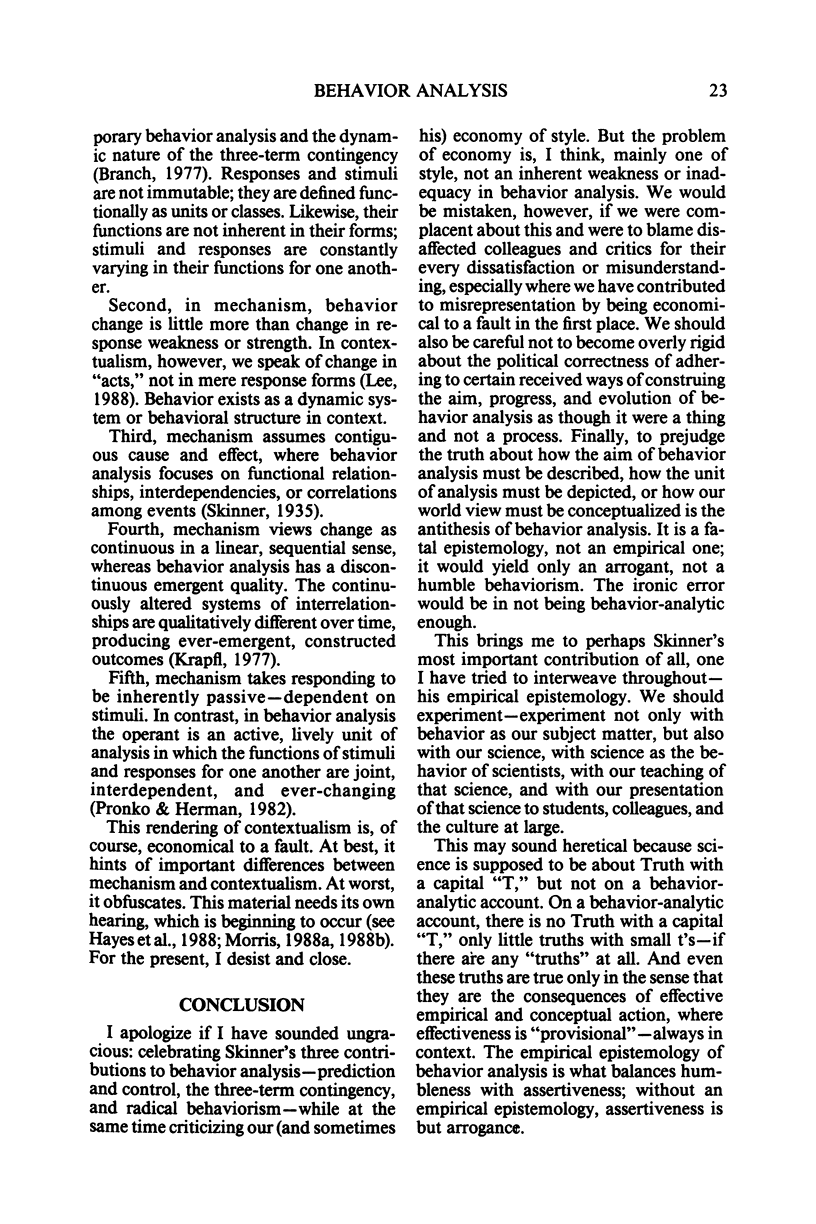
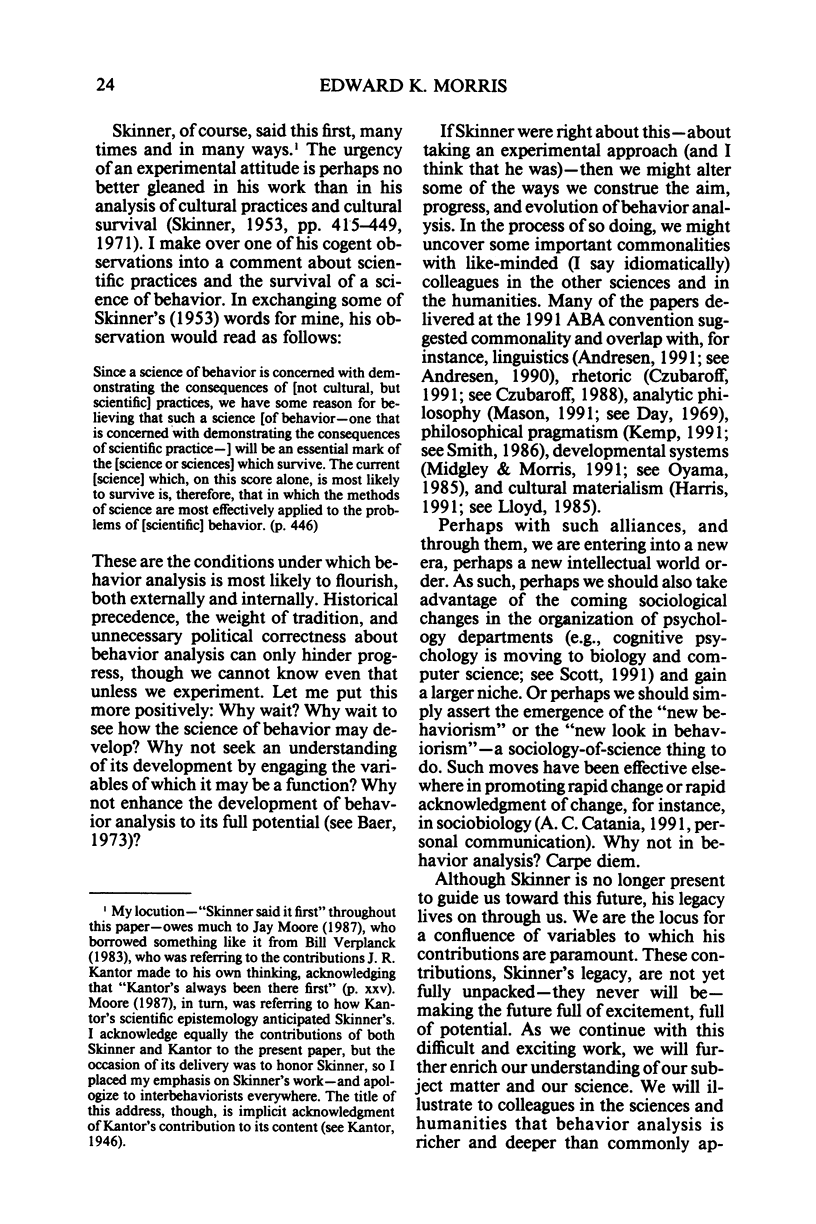
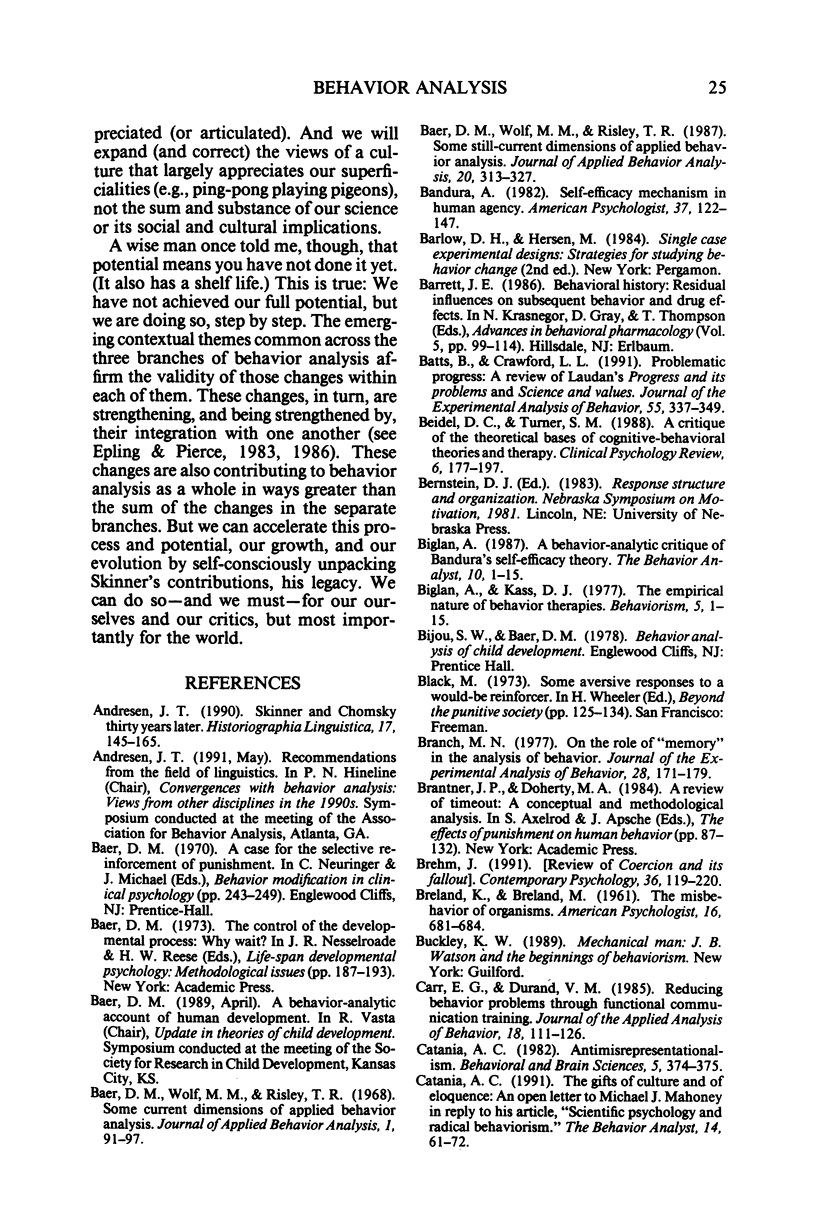
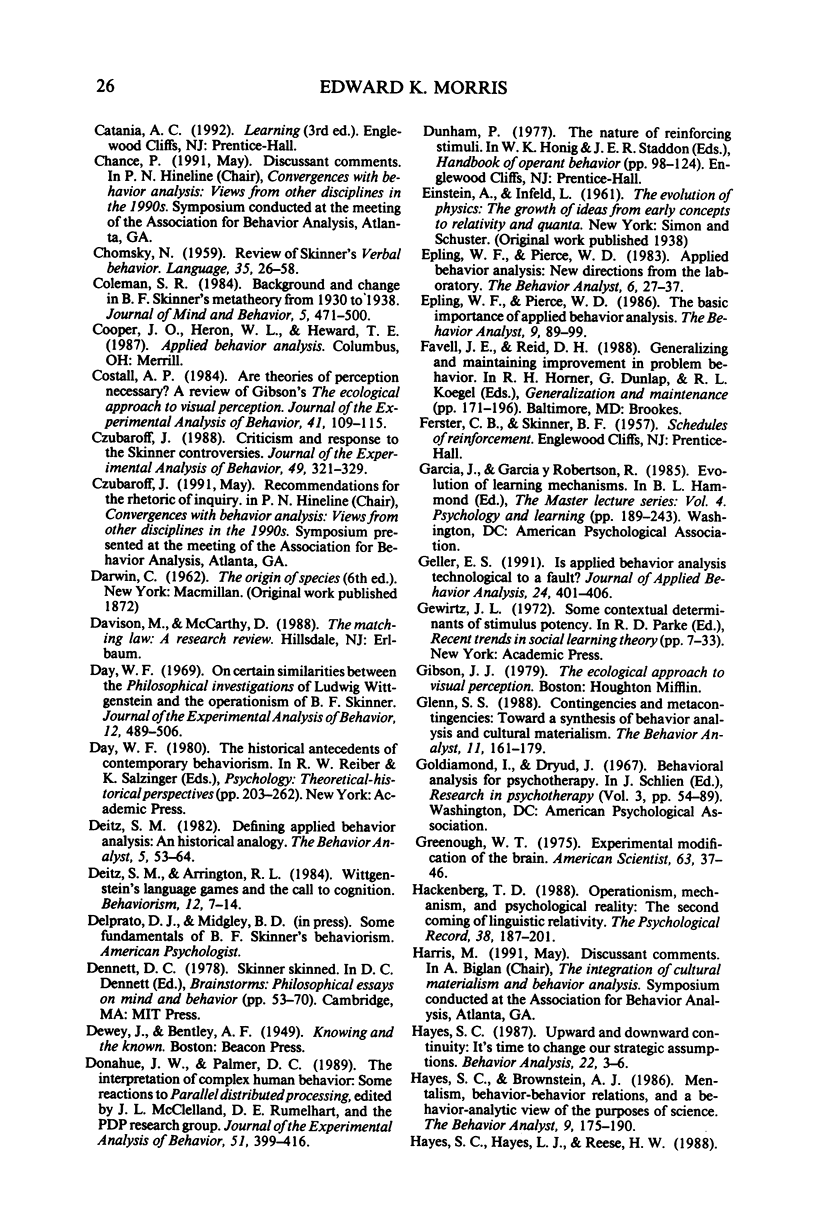
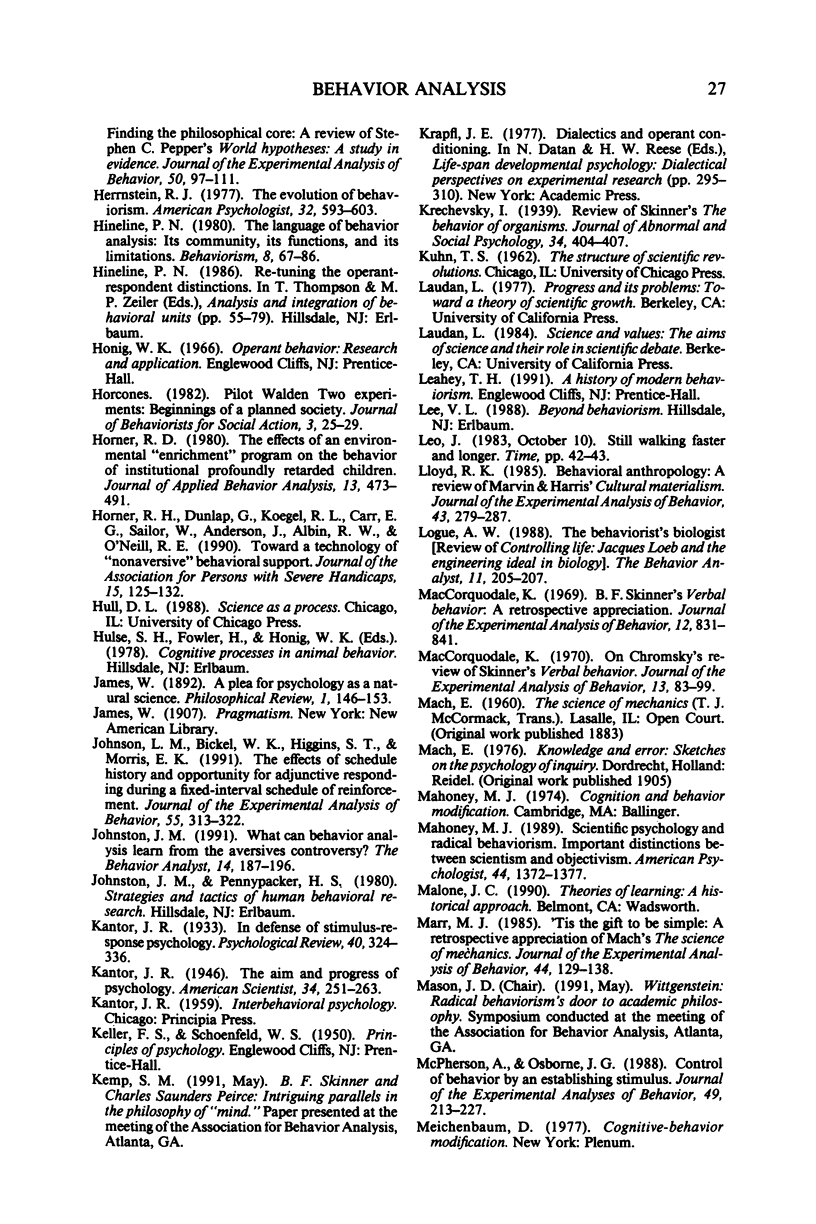
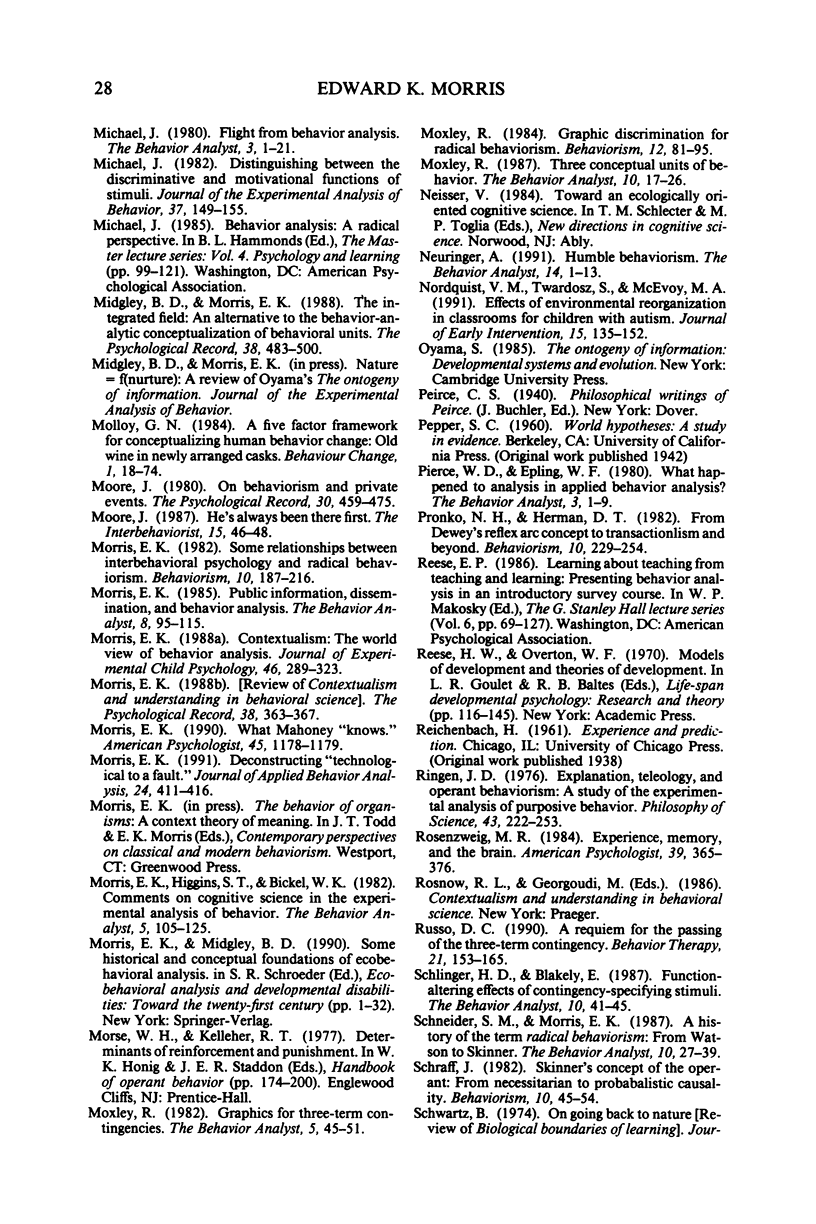
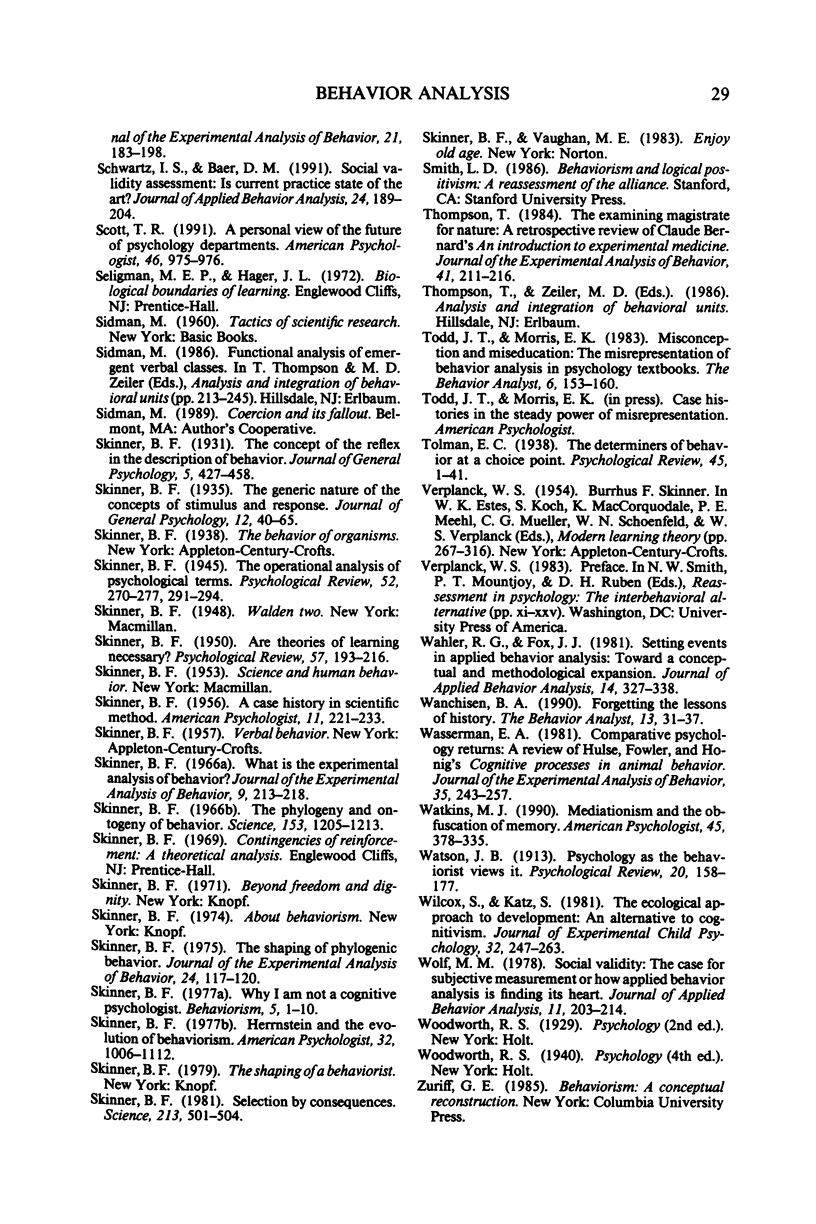
Selected References
These references are in PubMed. This may not be the complete list of references from this article.
- Baer D. M., Wolf M. M., Risley T. R. Some current dimensions of applied behavior analysis. J Appl Behav Anal. 1968 Spring;1(1):91–97. doi: 10.1901/jaba.1968.1-91. [DOI] [PMC free article] [PubMed] [Google Scholar]
- Baer D. M., Wolf M. M. Some still-current dimensions of applied behavior analysis. J Appl Behav Anal. 1987 Winter;20(4):313–327. doi: 10.1901/jaba.1987.20-313. [DOI] [PMC free article] [PubMed] [Google Scholar]
- Biglan A. A behavior-analytic critique of Bandura's self-efficacy theory. Behav Anal. 1987 Spring;10(1):1–15. doi: 10.1007/BF03392402. [DOI] [PMC free article] [PubMed] [Google Scholar]
- Branch M. N. On the role of "memory" in the analysis of behavior. J Exp Anal Behav. 1977 Sep;28(2):171–179. doi: 10.1901/jeab.1977.28-171. [DOI] [PMC free article] [PubMed] [Google Scholar]
- Carr E. G., Durand V. M. Reducing behavior problems through functional communication training. J Appl Behav Anal. 1985 Summer;18(2):111–126. doi: 10.1901/jaba.1985.18-111. [DOI] [PMC free article] [PubMed] [Google Scholar]
- Catania A. C. The gifts of culture and of eloquence: An open letter to Michael J. Mahoney in reply to his article, "Scientific psychology and radical behaviorism". Behav Anal. 1991 Spring;14(1):61–72. doi: 10.1007/BF03392553. [DOI] [PMC free article] [PubMed] [Google Scholar]
- Costall A. P. Are theories of perception necessary? A review of Gibson's The Ecological Approach to Visual Perception. J Exp Anal Behav. 1984 Jan;41(1):109–115. doi: 10.1901/jeab.1984.41-109. [DOI] [PMC free article] [PubMed] [Google Scholar]
- Czubaroff J. Criticism and response in the Skinner controversies. J Exp Anal Behav. 1988 Mar;49(2):321–329. doi: 10.1901/jeab.1988.49-321. [DOI] [PMC free article] [PubMed] [Google Scholar]
- Deitz S. M. Defining applied behavior analysis: an historical analogy. Behav Anal. 1982 Spring;5(1):53–64. doi: 10.1007/BF03393140. [DOI] [PMC free article] [PubMed] [Google Scholar]
- Epling W. F., Pierce W. D. Applied behavior analysis: New directions from the laboratory. Behav Anal. 1983 Spring;6(1):27–37. doi: 10.1007/BF03391871. [DOI] [PMC free article] [PubMed] [Google Scholar]
- Epling W. F., Pierce W. D. The basic importance of applied behavior analysis. Behav Anal. 1986 Spring;9(1):89–99. doi: 10.1007/BF03391932. [DOI] [PMC free article] [PubMed] [Google Scholar]
- Glenn S. S. Contingencies and metacontingencies: Toward a synthesis of behavior analysis and cultural materialism. Behav Anal. 1988 Fall;11(2):161–179. doi: 10.1007/BF03392470. [DOI] [PMC free article] [PubMed] [Google Scholar]
- Greenough W. T. Experiential modification of the developing brain. Am Sci. 1975 Jan-Feb;63(1):37–46. [PubMed] [Google Scholar]
- Hayes S. C., Brownstein A. J. Mentalism, behavior-behavior relations, and a behavior-analytic view of the purposes of science. Behav Anal. 1986 Fall;9(2):175–190. doi: 10.1007/BF03391944. [DOI] [PMC free article] [PubMed] [Google Scholar]
- Hayes S. C., Hayes L. J., Reese H. W. Finding the philosophical core: A review of Stephen C. Pepper's World Hypotheses: A Study in Evidence. J Exp Anal Behav. 1988 Jul;50(1):97–111. doi: 10.1901/jeab.1988.50-97. [DOI] [PMC free article] [PubMed] [Google Scholar]
- Horner R. D. The effects of an environmental "enrichment" program on the behavior of institutionalized profoundly retarded children. J Appl Behav Anal. 1980 Fall;13(3):473–491. doi: 10.1901/jaba.1980.13-473. [DOI] [PMC free article] [PubMed] [Google Scholar]
- Johnson L. M., Bickel W. K., Higgins S. T., Morris E. K. The effects of schedule history and the opportunity for adjunctive responding on behavior during a fixed-interval schedule of reinforcement. J Exp Anal Behav. 1991 May;55(3):313–322. doi: 10.1901/jeab.1991.55-313. [DOI] [PMC free article] [PubMed] [Google Scholar]
- Johnston J. M. What can behavior analysis learn from the aversives controversy? Behav Anal. 1991 Fall;14(2):187–196. doi: 10.1007/BF03392569. [DOI] [PMC free article] [PubMed] [Google Scholar]
- MacCorquodale K. B. F. Skinner's verbal behavior: a retrospective appreciation. J Exp Anal Behav. 1969 Sep;12(5):831–841. doi: 10.1901/jeab.1969.12-831. [DOI] [PMC free article] [PubMed] [Google Scholar]
- McPherson A., Osborne J. G. Control of behavior by an establishing stimulus. J Exp Anal Behav. 1988 Mar;49(2):213–227. doi: 10.1901/jeab.1988.49-213. [DOI] [PMC free article] [PubMed] [Google Scholar]
- Michael J. Distinguishing between discriminative and motivational functions of stimuli. J Exp Anal Behav. 1982 Jan;37(1):149–155. doi: 10.1901/jeab.1982.37-149. [DOI] [PMC free article] [PubMed] [Google Scholar]
- Michael J. Flight from behavior analysis. Behav Anal. 1980 Fall;3(2):1–21. doi: 10.1007/BF03391838. [DOI] [PMC free article] [PubMed] [Google Scholar]
- Morris E. K., Higgins S. T., Bickel W. K. Comments on cognitive science in the experimental analysis of behavior. Behav Anal. 1982 Fall;5(2):109–125. doi: 10.1007/BF03392380. [DOI] [PMC free article] [PubMed] [Google Scholar]
- Morris E. K. Public information, dissemination, and behavior analysis. Behav Anal. 1985 Spring;8(1):95–110. doi: 10.1007/BF03391916. [DOI] [PMC free article] [PubMed] [Google Scholar]
- Moxley R. Graphics for three-term contingencies. Behav Anal. 1982 Spring;5(1):45–51. doi: 10.1007/BF03393139. [DOI] [PMC free article] [PubMed] [Google Scholar]
- Moxley R. Three conceptual units for behavior. Behav Anal. 1987 Spring;10(1):17–26. doi: 10.1007/BF03392403. [DOI] [PMC free article] [PubMed] [Google Scholar]
- Neuringer A. Humble behaviorism. Behav Anal. 1991 Spring;14(1):1–13. doi: 10.1007/BF03392543. [DOI] [PMC free article] [PubMed] [Google Scholar]
- doi: 10.1901/jeab.1991.55-337. [DOI] [PMC free article] [Google Scholar]
- doi: 10.1901/jeab.1981.35-243. [DOI] [PMC free article] [Google Scholar]
- doi: 10.1901/jeab.1970.13-83. [DOI] [PMC free article] [Google Scholar]
- doi: 10.1901/jeab.1969.12-489. [DOI] [PMC free article] [Google Scholar]
- doi: 10.1901/jeab.1989.51-399. [DOI] [PMC free article] [Google Scholar]
- doi: 10.1901/jeab.1984.41-211. [DOI] [PMC free article] [Google Scholar]
- doi: 10.1901/jeab.1985.43-279. [DOI] [PMC free article] [Google Scholar]
- doi: 10.1901/jeab.1985.44-129. [DOI] [PMC free article] [Google Scholar]
- Pierce W. D., Epling W. F. What happened to analysis in applied behavior analysis? Behav Anal. 1980 Spring;3(1):1–9. doi: 10.1007/BF03392373. [DOI] [PMC free article] [PubMed] [Google Scholar]
- Rosenzweig M. R. Experience, memory, and the brain. Am Psychol. 1984 Apr;39(4):365–376. doi: 10.1037//0003-066x.39.4.365. [DOI] [PubMed] [Google Scholar]
- SKINNER B. F. Are theories of learning necessary? Psychol Rev. 1950 Jul;57(4):193–216. doi: 10.1037/h0054367. [DOI] [PubMed] [Google Scholar]
- Schlinger H., Blakely E. Function-altering effects of contingency-specifying stimuli. Behav Anal. 1987 Spring;10(1):41–45. doi: 10.1007/BF03392405. [DOI] [PMC free article] [PubMed] [Google Scholar]
- Schneider S. M., Morris E. K. A history of the term radical behaviorism: From Watson to Skinner. Behav Anal. 1987 Spring;10(1):27–39. doi: 10.1007/BF03392404. [DOI] [PMC free article] [PubMed] [Google Scholar]
- Schwartz I. S., Baer D. M. Social validity assessments: is current practice state of the art? J Appl Behav Anal. 1991 Summer;24(2):189–204. doi: 10.1901/jaba.1991.24-189. [DOI] [PMC free article] [PubMed] [Google Scholar]
- Skinner B. F. Selection by consequences. Science. 1981 Jul 31;213(4507):501–504. doi: 10.1126/science.7244649. [DOI] [PubMed] [Google Scholar]
- Skinner B. F. The phylogeny and ontogeny of behavior. Contingencies of reinforcement throw light on contingencies of survival in the evolution of behavior. Science. 1966 Sep 9;153(3741):1205–1213. doi: 10.1126/science.153.3741.1205. [DOI] [PubMed] [Google Scholar]
- Skinner B. F. The shaping of phylogenic behavior. J Exp Anal Behav. 1975 Jul;24(1):117–120. doi: 10.1901/jeab.1975.24-117. [DOI] [PMC free article] [PubMed] [Google Scholar]
- Skinner B. F. What is the experimental analysis of behavior? J Exp Anal Behav. 1966 May;9(3):213–218. doi: 10.1901/jeab.1966.9-213. [DOI] [PMC free article] [PubMed] [Google Scholar]
- Todd J. T., Morris E. K. Misconception and miseducation: Presentations of radical behaviorism in psychology textbooks. Behav Anal. 1983 Fall;6(2):153–160. doi: 10.1007/BF03392394. [DOI] [PMC free article] [PubMed] [Google Scholar]
- Wahler R. G., Fox J. J. Setting events in applied behavior analysis: Toward a conceptual and methodological expansion. J Appl Behav Anal. 1981 Fall;14(3):327–338. doi: 10.1901/jaba.1981.14-327. [DOI] [PMC free article] [PubMed] [Google Scholar]
- Wanchisen B. A. Forgetting the lessons of history. Behav Anal. 1990 Spring;13(1):31–37. doi: 10.1007/BF03392515. [DOI] [PMC free article] [PubMed] [Google Scholar]
- Watkins M. J. Mediationism and the obfuscation of memory. Am Psychol. 1990 Mar;45(3):328–335. doi: 10.1037//0003-066x.45.3.328. [DOI] [PubMed] [Google Scholar]
- Wolf M. M. Social validity: the case for subjective measurement or how applied behavior analysis is finding its heart. J Appl Behav Anal. 1978 Summer;11(2):203–214. doi: 10.1901/jaba.1978.11-203. [DOI] [PMC free article] [PubMed] [Google Scholar]


